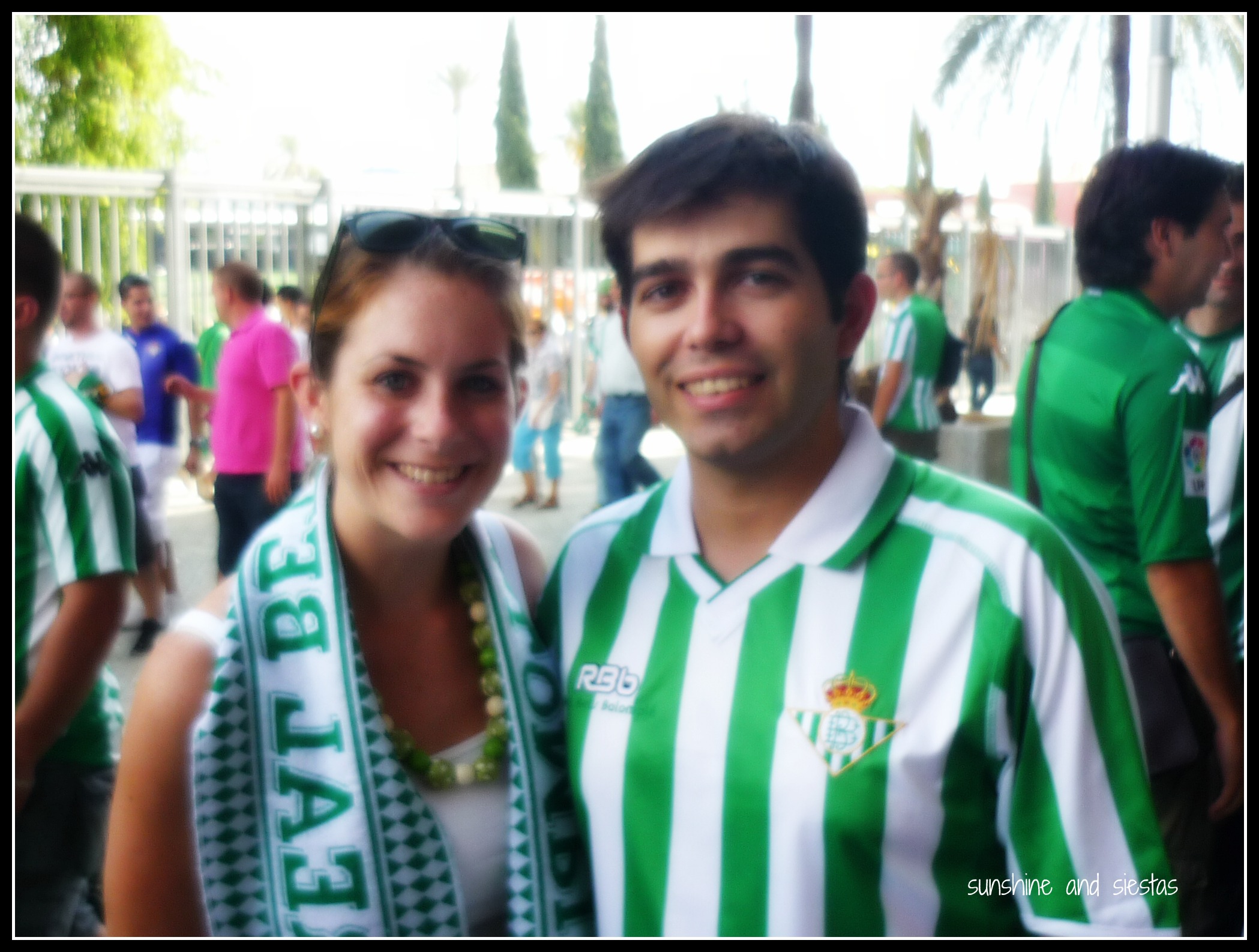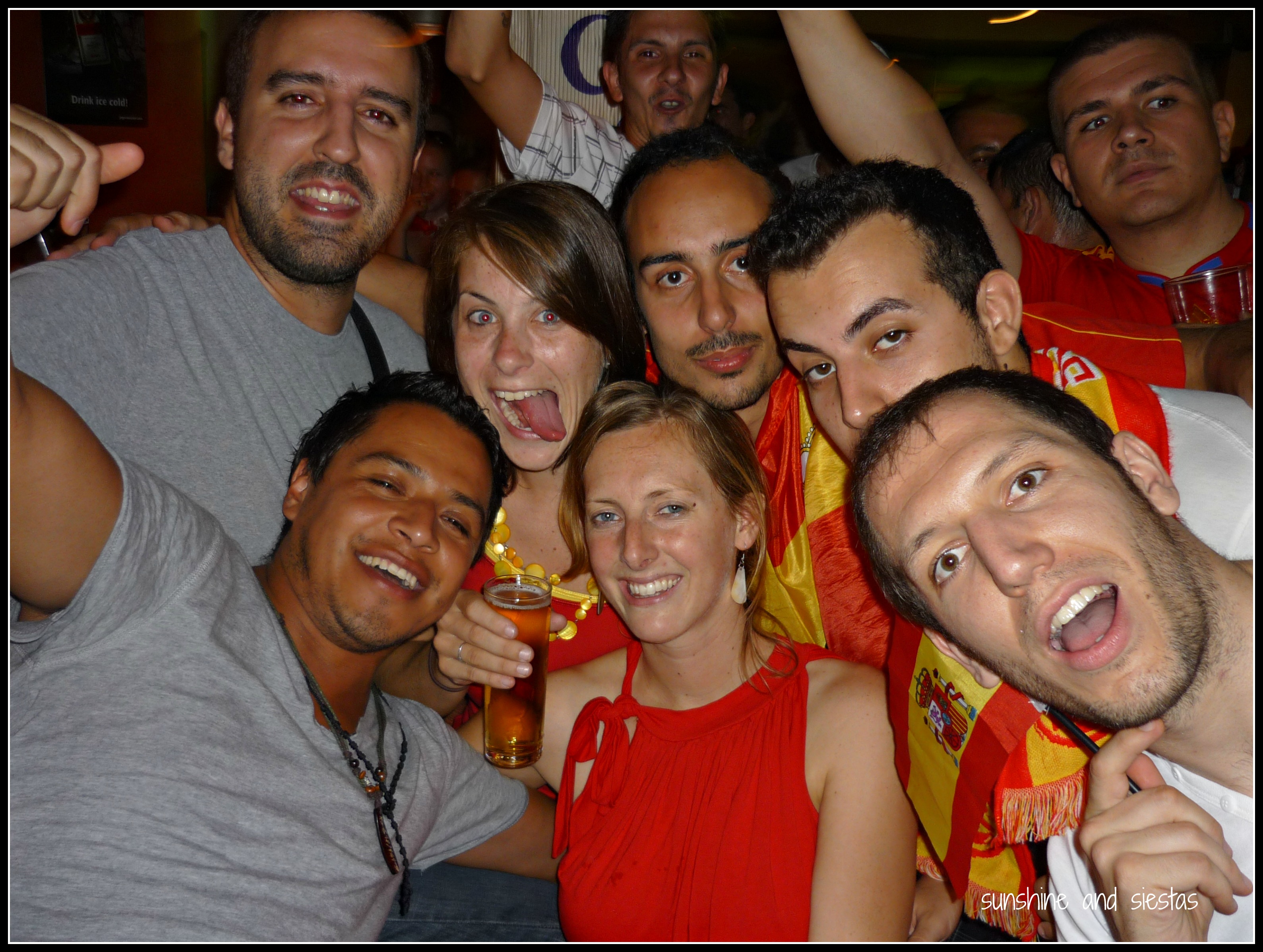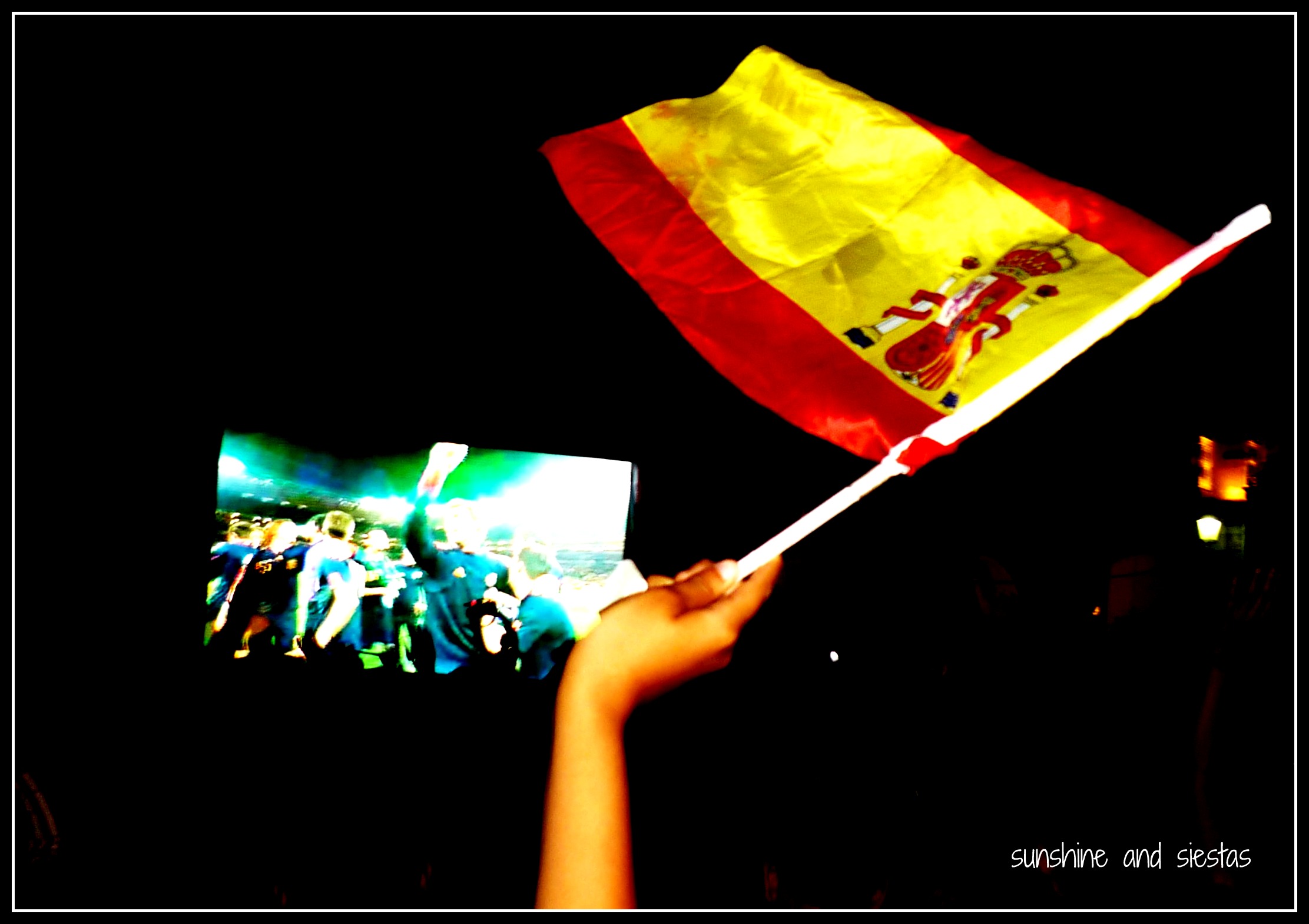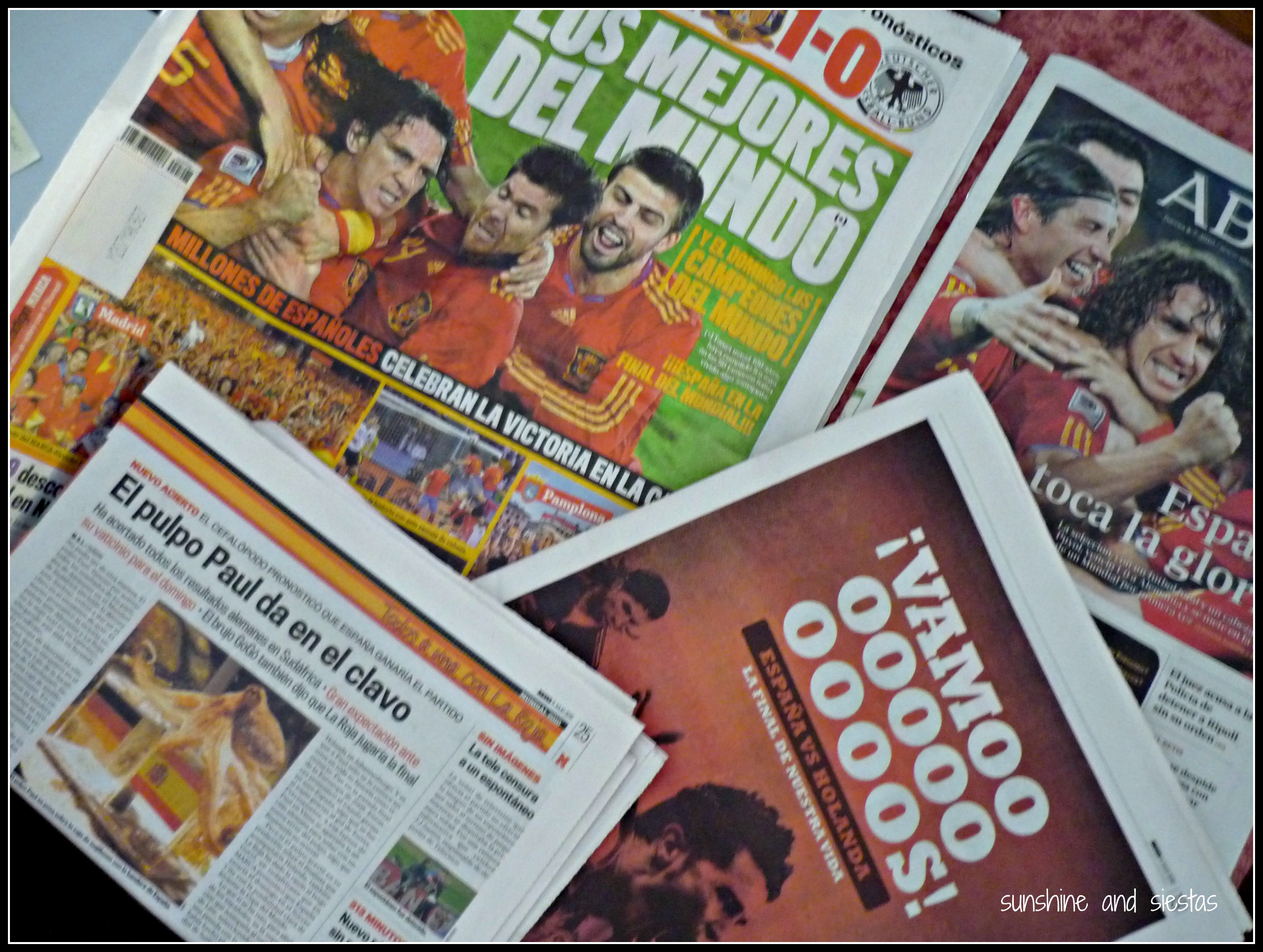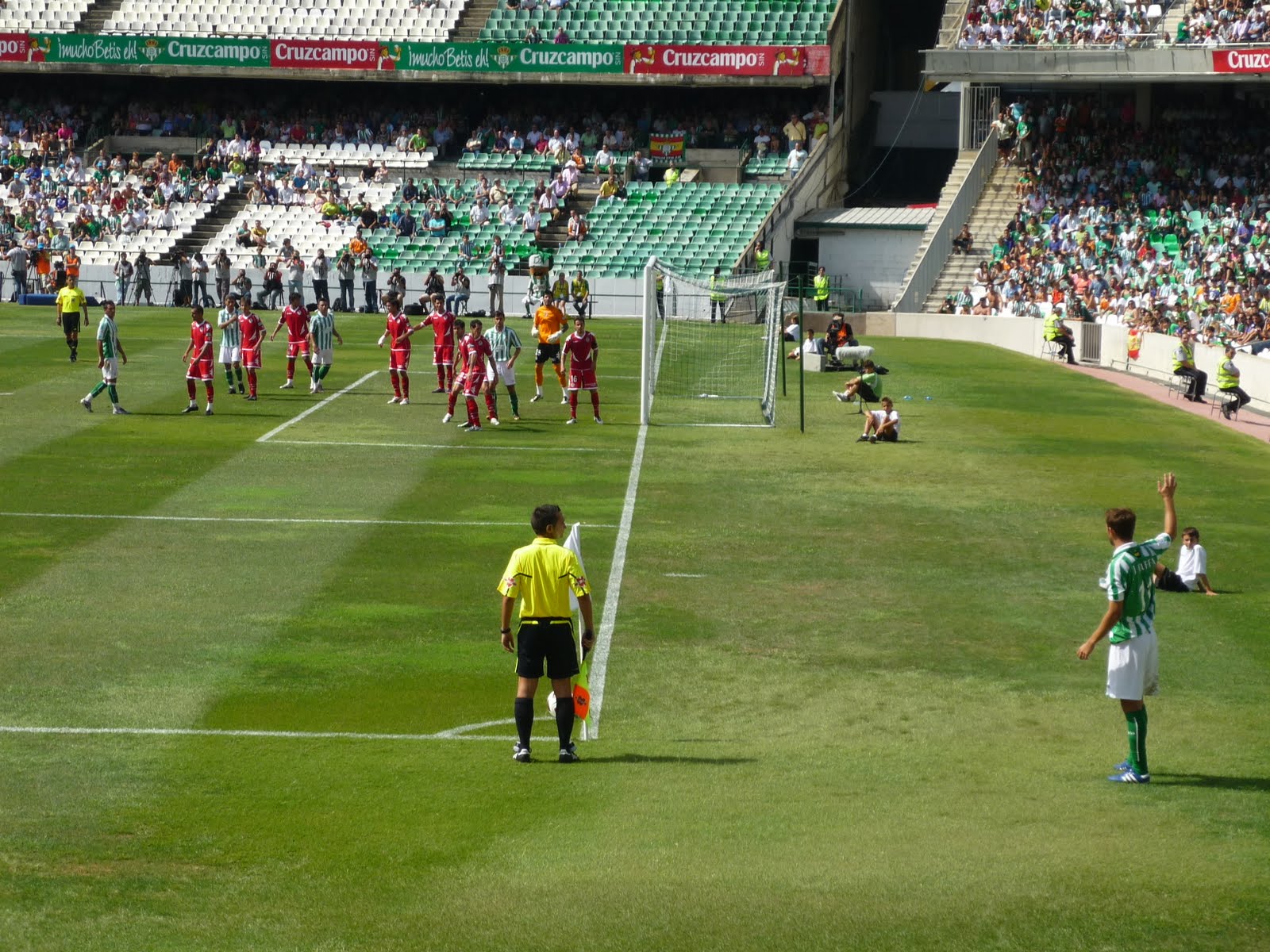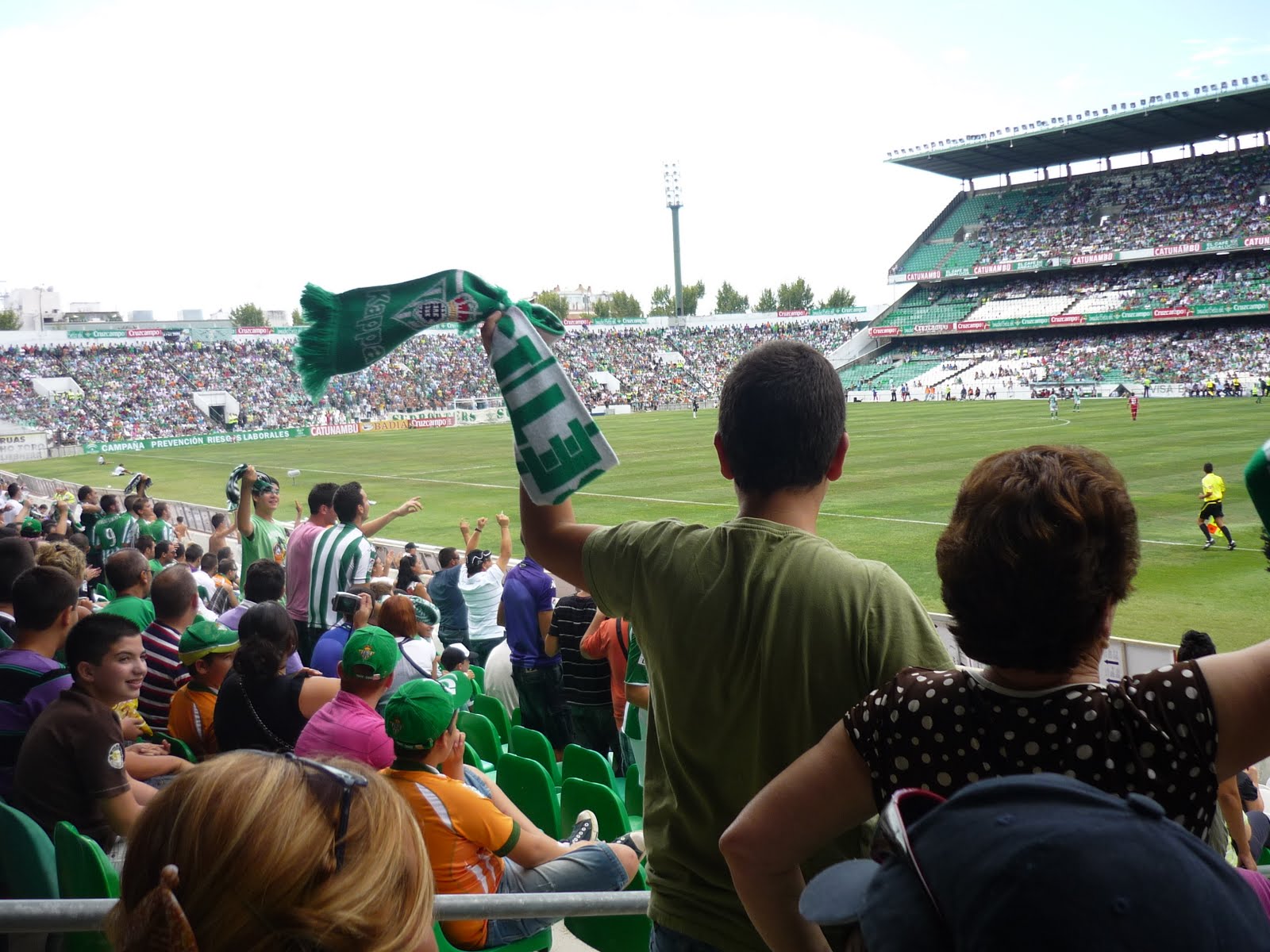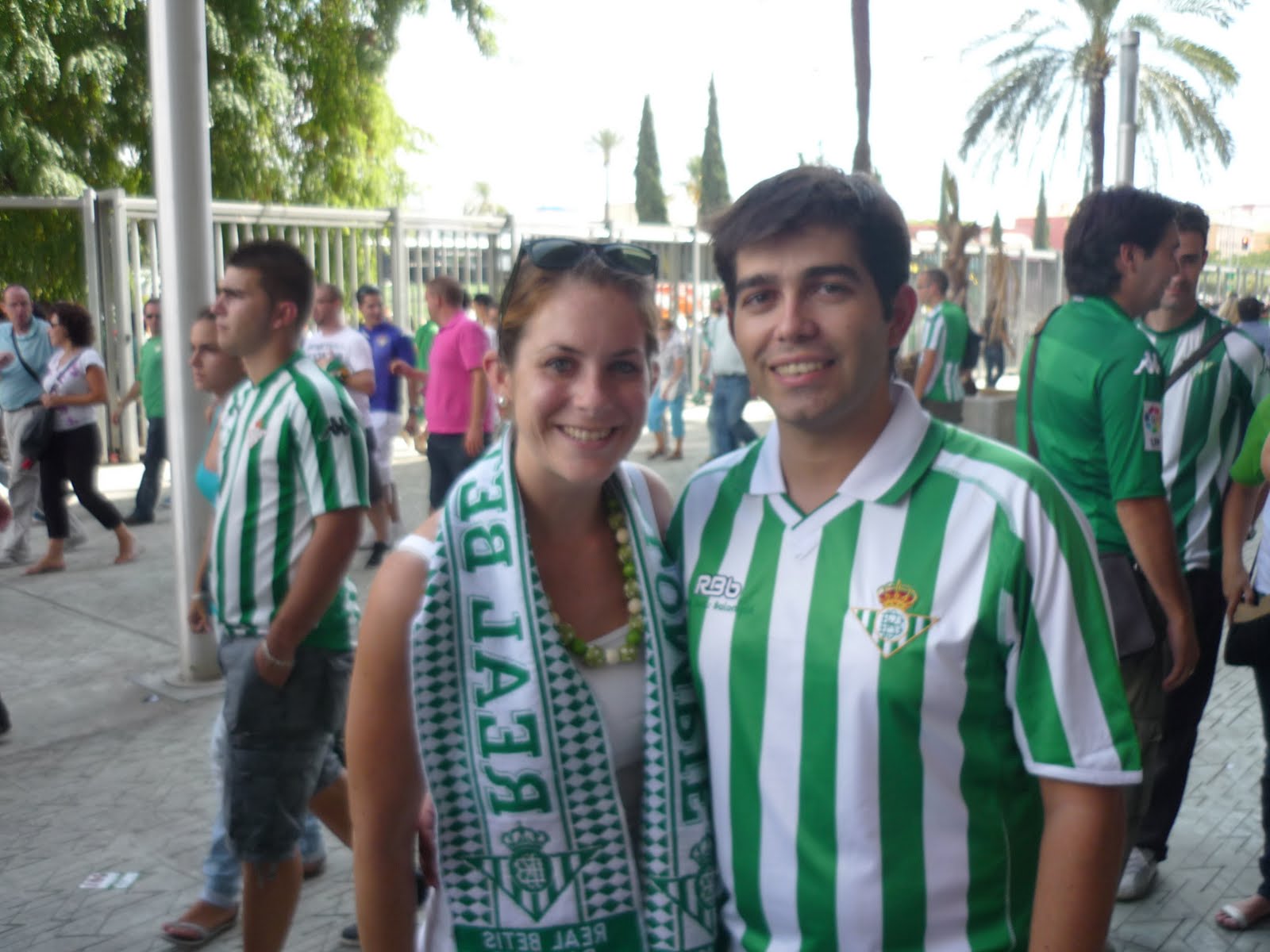My first experience with Spanish fútbol was a Fútbol Club Sevilla game in September 2007. My grandma and I melted like butter in the sun and got seats high in the grada, next to a man who spilled over his seat and shouted COÑO every time the rojiblancos lost possession of the ball.
Helen asked how I liked it, and I pined for Hawkeye Football.
For me, fútbol was little more than an excuse to get some friends together to drink beer and casually comment on a game. I had played as a kid for years, hanging up my shin guards to focus on school and gymnastics in 2000, years before Spain’s national team was even on my radar.
In the summer of 2008, however, I spent my months missing Spain and working at Banana Republic Factory Store. My boss, Erik, approached me one July morning with a proposition: Work my 90 minutes of break simultaneously and call with updates. What updates?
The Euro Cup tournament had begun, and my boss assumed I’d be interested in watching it. I obliged, and found it was me who was then yelling COÑO and TIRA, COÑO and ME CAGO EN LA MÁ! as Spain battled Germany in the finals. After 90 grueling minutes, la Furia Roja came out on top, a taste of what to expect in South Africa two years later. I was impassioned.
Xabi. Iker. Piqué. All part of my vocabulary. I played Wave Your Flag for my students Friday on the opening day of the 2012 Euro Cup and tears pricked my eyes as I remember watching countless games and scheduling my social calendar around them during the World Cup – US, Mexico, Germany and Spain made up the countries of nationalities of la familia, and we ate guacamole at Juan and Marco’s while cheering on Mexico, found a beach bar to watch Spain-Uruguay and convinced Kirsten to not wear any black, thus giving away her German heritage before they lost to Spain in the semis. I once even watched a game by myself, back against the wall, just to not risk missing the first ten minutes to return home after work.
When I walk into Plaza María Pita in La Coruña, I remember the excitement leading up to the final. Carrying a plastic bag full of cold beers, we waited hours for the square to fill while Waka Waka was played on repeat. With the crowd ebbing and flowing with every corner, card and kick, we all found ourselves at different points of the plaza. At minute 82, I told Lauren I would rather pee my pants than miss the last few minutes of a tied game. As I squatted over a toilet where I didn’t even bother to turn on the light, an eruption occurred. I rushed out to see if someone had scored, pants still unbuttoned.
In the end, an extra 30 minutes was tacked onto the game. Nerves were tense as people around us hugged us in close. No one spoke. Tikitaki. Back and forth went the ball. Iniesta in from the right side. Strikes. Past the goalie’s hand. straight into the net. As Reina put it, “He wrote the script for our success.” Spain had brought faith to a country in the midst of its worst economic crisis, had united a nation in the name of balompié. I felt like I was a part of the greater picture, swept up in the craze and into numerous hugs and high fives from strangers (including the defeated Dutch).
Two years later, I’m with Inma cheering on La Roja as they play a friendly with China. The game isn’t especially interesting, but it was the last time they’d play before their debut in the Cup this evening with Italy. I cheer the chants loudly enough to lose my voice, straining my neck around someone in front of me with a goofy hat to see the corner kicks. Explain to Inma what fuera de juego means and why cards are given.
Finally, after five years, I have found a way to move past my need for tailgating and Gary Dolphin, and I feel that La Roja is my Spanish team to believe in.
Euro Cup FAQs:
The Who, What, Where: During the month of June, 16 qualifying teams from across Europe will go head to head to determine the continent’s best football club, with the final on July 1st. Poland and Ukraine are sharing the hosting duties this time around.
Spain’s Desafío: Be the first team in history to win back-to-back-to-back Eurocup (2008), World Cup (2010) and Eurocup (2012). Apart from being a team of depth, La Roja’s players don’t play with their egos to feed as they do in the national league. Spain is grouped with Italy, Ireland and Croatia and plays their first game tomorrow at 8:45 pm against the azzurra from our Mediterranean neighbor. Teams to watch are the usual heavy hitters: England, France, Holland and Germany, two of whom were teams Spain beat during their World Cup run.
Spain’s Schedule: Spain plays its fellow group members in the first round: Italy today at 8:45 pm, Ireland the 14th at the same time and Croatia on the 18th. The two tops teams of the division will duke it out in the quarterfinals on June 23rd. The winner will be decided on July 1st at 8:45 pm.
Who are you rooting for?
